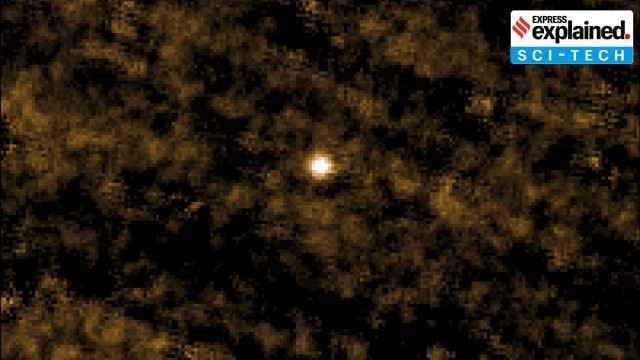Description

Source: Popularmechanics
Disclaimer: Copyright infringement not intended.
Context
- Scientists at the Chinese Academy of Sciences have successfully manipulated the Casimir effect, switching it from attractive to repulsive forces using a ferrofluid as an intermediate medium.
- The study was published in May 2024 in the journal Nature Physics.
Details
Recent Breakthrough
- Mechanism of Control
- Ferrofluids: These are liquids that become strongly magnetized in the presence of a magnetic field.
- By applying magnetic fields, researchers controlled the dielectric permittivities and magnetic permeabilities of the ferrofluids, thus tuning the Casimir force.
- The experiment involved manipulating the Casimir effect between a gold sphere and a silicon dioxide substrate, demonstrating reversible transitions from attraction to repulsion.
- Theoretical Basis
- The theoretical calculations underpinning this study show that variations in magnetic field strength, separation distance, and ferrofluid volume fraction can effectively modulate the Casimir force.
- This manipulation is challenging with conventional materials but achievable with ferrofluids due to their tunable magnetic properties.
Implications for Nanotechnology
- Enhanced Control and Precision
- The ability to switch between attractive and repulsive Casimir forces allows for greater precision in designing NEMS and MEMS.
- This control can reduce stiction issues, where parts of the devices stick together due to attractive forces, improving device reliability and longevity.
- Potential Applications
- Actuators and Sensors: Improved control over small-scale forces can enhance the performance of nano-actuators and sensors.
- Quantum Computing: Casimir force manipulation could be beneficial in the development of quantum computing components, where precise control of quantum states is crucial.
- Medical Nanodevices: In biomedical applications, controlling the Casimir effect could lead to more effective drug delivery systems and diagnostic tools.
Broader Impact
- Fundamental Physics
- Understanding and controlling the Casimir effect contributes to our knowledge of quantum field theory and vacuum fluctuations.
- It opens avenues for experimental tests of theoretical models and predictions.
- Advanced Technologies
- Beyond nanotechnology, this breakthrough could influence the development of new materials and metamaterials with customized electromagnetic properties.
- Long-term implications might extend to macroscopic quantum devices and energy applications.
- Continued Research
- Future research will likely explore other materials and configurations to further refine the control over the Casimir effect.
- Investigations into the interplay between Casimir forces and other quantum phenomena, such as quantum entanglement and Hawking radiation, could yield additional insights and applications.
About the Casimir effect
- The Casimir effect is a quantum phenomenon where two uncharged, parallel, closely spaced plates attract or repel each other due to quantum vacuum fluctuations.
- This effect has been a subject of interest since its prediction by Hendrik Casimir in 1948 and its first measurement by Steve Lamoreaux in 1997.
Theoretical Background
- Quantum Vacuum Fluctuations
- In quantum field theory, even the vacuum state is not empty but filled with fluctuating electromagnetic fields. These fluctuations arise due to the Heisenberg uncertainty principle.
- Virtual particles continuously appear and disappear in the vacuum, contributing to the zero-point energy of the system.
- Casimir's Prediction
- Hendrik Casimir predicted that two uncharged, parallel, perfectly conducting plates placed very close to each other would experience an attractive force.
- This force arises due to the restriction of allowed electromagnetic modes between the plates, leading to a difference in vacuum energy compared to outside the plates.
- Lifshitz Theory
- Generalizes the Casimir effect to real materials with finite conductivity and finite temperature.
- The Lifshitz formula accounts for dielectric properties and thermal fluctuations.
Implications and Theoretical Extensions
- Quantum Field Theory and Condensed Matter Physics
- The Casimir effect provides insight into the properties of quantum vacuum and the role of boundary conditions in quantum field theory.
- It has implications for the study of confined systems and surface interactions in condensed matter physics.
- Cosmology and Dark Energy
- Some theories propose that the Casimir effect could contribute to the cosmological constant and dark energy, although this remains a speculative area of research.
Applications
- Nanotechnology and Microelectromechanical Systems (MEMS)
- The Casimir effect plays a significant role at the nanoscale, affecting the design and operation of MEMS and NEMS (nanoelectromechanical systems).
- It can cause stiction (static friction) in closely spaced components, which is a challenge in device engineering.
- Novel Materials and Metamaterials
- Researchers are exploring materials with tailored electromagnetic properties to control and manipulate Casimir forces.
- Metamaterials with negative refractive indices can potentially lead to repulsive Casimir forces.
- Fundamental Physics Experiments
- Precision measurements of the Casimir effect are used to test theories beyond the Standard Model of particle physics, such as extra dimensions and modifications to gravity.
Sources:
Popularmechanics
|
PRACTICE QUESTION
Q. The Casimir effect not only deepens our understanding of quantum vacuum phenomena but also drives innovation in fields like nanotechnology and materials science. Discuss. (10 marks)
|










